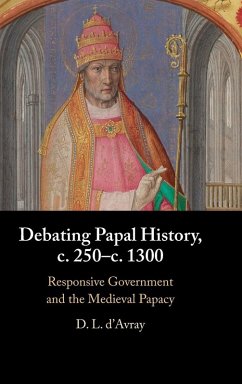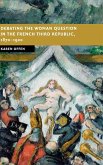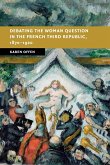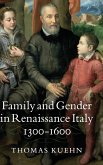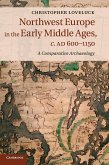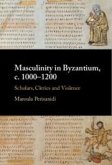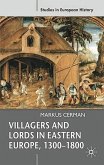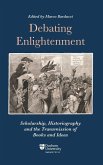D. L. D'Avray
Debating Papal History, c. 250-c. 1300
D. L. D'Avray
Debating Papal History, c. 250-c. 1300
- Gebundenes Buch
- Merkliste
- Auf die Merkliste
- Bewerten Bewerten
- Teilen
- Produkt teilen
- Produkterinnerung
- Produkterinnerung
Through a series of case studies with translated supporting documents, D.L. d'Avray offers a fresh reinterpretation of papal history from the third to the thirteenth century. He argues that papal authority was not imposed from the top but emerged through responses to resolve tensions between subsystems, both ecclesiastical and lay.
Andere Kunden interessierten sich auch für
![Debating the Woman Question in the French Third Republic, 1870-1920 Debating the Woman Question in the French Third Republic, 1870-1920]() Karen OffenDebating the Woman Question in the French Third Republic, 1870-192054,99 €
Karen OffenDebating the Woman Question in the French Third Republic, 1870-192054,99 €![Debating the Woman Question in the French Third Republic, 1870-1920 Debating the Woman Question in the French Third Republic, 1870-1920]() Karen OffenDebating the Woman Question in the French Third Republic, 1870-192043,99 €
Karen OffenDebating the Woman Question in the French Third Republic, 1870-192043,99 €![Family and Gender in Renaissance Italy, 1300-1600 Family and Gender in Renaissance Italy, 1300-1600]() Thomas KuehnFamily and Gender in Renaissance Italy, 1300-1600140,99 €
Thomas KuehnFamily and Gender in Renaissance Italy, 1300-1600140,99 €![Northwest Europe in the Early Middle Ages, c. AD 600-1150 Northwest Europe in the Early Middle Ages, c. AD 600-1150]() Christopher LoveluckNorthwest Europe in the Early Middle Ages, c. AD 600-1150138,99 €
Christopher LoveluckNorthwest Europe in the Early Middle Ages, c. AD 600-1150138,99 €![Masculinity in Byzantium, c. 1000-1200 Masculinity in Byzantium, c. 1000-1200]() Maroula PerisanidiMasculinity in Byzantium, c. 1000-1200116,99 €
Maroula PerisanidiMasculinity in Byzantium, c. 1000-1200116,99 €![Villagers and Lords in Eastern Europe, 1300-1800 Villagers and Lords in Eastern Europe, 1300-1800]() Markus CermanVillagers and Lords in Eastern Europe, 1300-180037,99 €
Markus CermanVillagers and Lords in Eastern Europe, 1300-180037,99 €![Debating Enlightenment Debating Enlightenment]() Debating Enlightenment70,99 €
Debating Enlightenment70,99 €-
-
-
Through a series of case studies with translated supporting documents, D.L. d'Avray offers a fresh reinterpretation of papal history from the third to the thirteenth century. He argues that papal authority was not imposed from the top but emerged through responses to resolve tensions between subsystems, both ecclesiastical and lay.
Produktdetails
- Produktdetails
- Verlag: Cambridge University Press
- Seitenzahl: 344
- Erscheinungstermin: 18. Oktober 2025
- Englisch
- Abmessung: 235mm x 157mm x 23mm
- Gewicht: 650g
- ISBN-13: 9781009597524
- ISBN-10: 1009597523
- Artikelnr.: 74775110
- Herstellerkennzeichnung
- Libri GmbH
- Europaallee 1
- 36244 Bad Hersfeld
- gpsr@libri.de
- Verlag: Cambridge University Press
- Seitenzahl: 344
- Erscheinungstermin: 18. Oktober 2025
- Englisch
- Abmessung: 235mm x 157mm x 23mm
- Gewicht: 650g
- ISBN-13: 9781009597524
- ISBN-10: 1009597523
- Artikelnr.: 74775110
- Herstellerkennzeichnung
- Libri GmbH
- Europaallee 1
- 36244 Bad Hersfeld
- gpsr@libri.de
D. L. d'Avray is Emeritus Professor of History at University College London and Supernumerary Fellow at Jesus College, Oxford. His previous publications include The Power of Protocol: Diplomatics and the Dynamics of Papal Government, c. 400-c. 1600 (Cambridge, 2023), Papal Jurisprudence, 385-1234: Social Origins and Medieval Reception of Canon Law (Cambridge, 2022), and Dissolving Royal Marriages: A Documentary History, 860-1600 (Cambridge, 2014). He has been a Fellow of the British Academy since 2005 and a Corresponding Fellow of the Medieval Academy of America since 2016.
1. Constantine and the papacy
2. The canon of the Bible
3. A late antique decretal and the Carolingian Church
4. Gelasius I and the idea of hierarchy
5. The episcopal and monastic systems
6. Marriage of priests in the mid-eighth century
7. An eighth-century questionnaire sent to the apostolic see
8. The Donation of Constantine and its afterlife
9. Privilege for Offa of England and his queen
10. Nicholas I reports on his deposition of two archbishops
11. Spiritual kinship, marriage and baptism in the late Carolingian era
12. Bad Latin in the tenth century papal entourage
13. John XIII raises Magdeburg to metropolitan status, as asked by the emperor Otto I
14. An early eleventh-century attempt to launch a crusade
15. The pope, the archbishop of Canterbury, and a man who had killed his son
16. Encyclical on the papal reform council of 1059
17. Dictatus papae of Gregory VII
18. Concordat of Worms
19. Bastard sons of priests
20. Reform legislation and the complexity of the social world
21. Baptism in the second decretal age
22. Early papal indulgences
23. Vernacular Bible reading
24. Templars as victims
25. Monastic exemption in the thirteenth century
26. Lay patronage as an ecclesiastical system
27. Rival metropolitans
28. Papal provisions
29. The papacy and lepers
30. The French monarchy and the papacy in the late thirteenth century
31. Boniface VIII as 'symphoniste'.
2. The canon of the Bible
3. A late antique decretal and the Carolingian Church
4. Gelasius I and the idea of hierarchy
5. The episcopal and monastic systems
6. Marriage of priests in the mid-eighth century
7. An eighth-century questionnaire sent to the apostolic see
8. The Donation of Constantine and its afterlife
9. Privilege for Offa of England and his queen
10. Nicholas I reports on his deposition of two archbishops
11. Spiritual kinship, marriage and baptism in the late Carolingian era
12. Bad Latin in the tenth century papal entourage
13. John XIII raises Magdeburg to metropolitan status, as asked by the emperor Otto I
14. An early eleventh-century attempt to launch a crusade
15. The pope, the archbishop of Canterbury, and a man who had killed his son
16. Encyclical on the papal reform council of 1059
17. Dictatus papae of Gregory VII
18. Concordat of Worms
19. Bastard sons of priests
20. Reform legislation and the complexity of the social world
21. Baptism in the second decretal age
22. Early papal indulgences
23. Vernacular Bible reading
24. Templars as victims
25. Monastic exemption in the thirteenth century
26. Lay patronage as an ecclesiastical system
27. Rival metropolitans
28. Papal provisions
29. The papacy and lepers
30. The French monarchy and the papacy in the late thirteenth century
31. Boniface VIII as 'symphoniste'.
1. Constantine and the papacy
2. The canon of the Bible
3. A late antique decretal and the Carolingian Church
4. Gelasius I and the idea of hierarchy
5. The episcopal and monastic systems
6. Marriage of priests in the mid-eighth century
7. An eighth-century questionnaire sent to the apostolic see
8. The Donation of Constantine and its afterlife
9. Privilege for Offa of England and his queen
10. Nicholas I reports on his deposition of two archbishops
11. Spiritual kinship, marriage and baptism in the late Carolingian era
12. Bad Latin in the tenth century papal entourage
13. John XIII raises Magdeburg to metropolitan status, as asked by the emperor Otto I
14. An early eleventh-century attempt to launch a crusade
15. The pope, the archbishop of Canterbury, and a man who had killed his son
16. Encyclical on the papal reform council of 1059
17. Dictatus papae of Gregory VII
18. Concordat of Worms
19. Bastard sons of priests
20. Reform legislation and the complexity of the social world
21. Baptism in the second decretal age
22. Early papal indulgences
23. Vernacular Bible reading
24. Templars as victims
25. Monastic exemption in the thirteenth century
26. Lay patronage as an ecclesiastical system
27. Rival metropolitans
28. Papal provisions
29. The papacy and lepers
30. The French monarchy and the papacy in the late thirteenth century
31. Boniface VIII as 'symphoniste'.
2. The canon of the Bible
3. A late antique decretal and the Carolingian Church
4. Gelasius I and the idea of hierarchy
5. The episcopal and monastic systems
6. Marriage of priests in the mid-eighth century
7. An eighth-century questionnaire sent to the apostolic see
8. The Donation of Constantine and its afterlife
9. Privilege for Offa of England and his queen
10. Nicholas I reports on his deposition of two archbishops
11. Spiritual kinship, marriage and baptism in the late Carolingian era
12. Bad Latin in the tenth century papal entourage
13. John XIII raises Magdeburg to metropolitan status, as asked by the emperor Otto I
14. An early eleventh-century attempt to launch a crusade
15. The pope, the archbishop of Canterbury, and a man who had killed his son
16. Encyclical on the papal reform council of 1059
17. Dictatus papae of Gregory VII
18. Concordat of Worms
19. Bastard sons of priests
20. Reform legislation and the complexity of the social world
21. Baptism in the second decretal age
22. Early papal indulgences
23. Vernacular Bible reading
24. Templars as victims
25. Monastic exemption in the thirteenth century
26. Lay patronage as an ecclesiastical system
27. Rival metropolitans
28. Papal provisions
29. The papacy and lepers
30. The French monarchy and the papacy in the late thirteenth century
31. Boniface VIII as 'symphoniste'.

